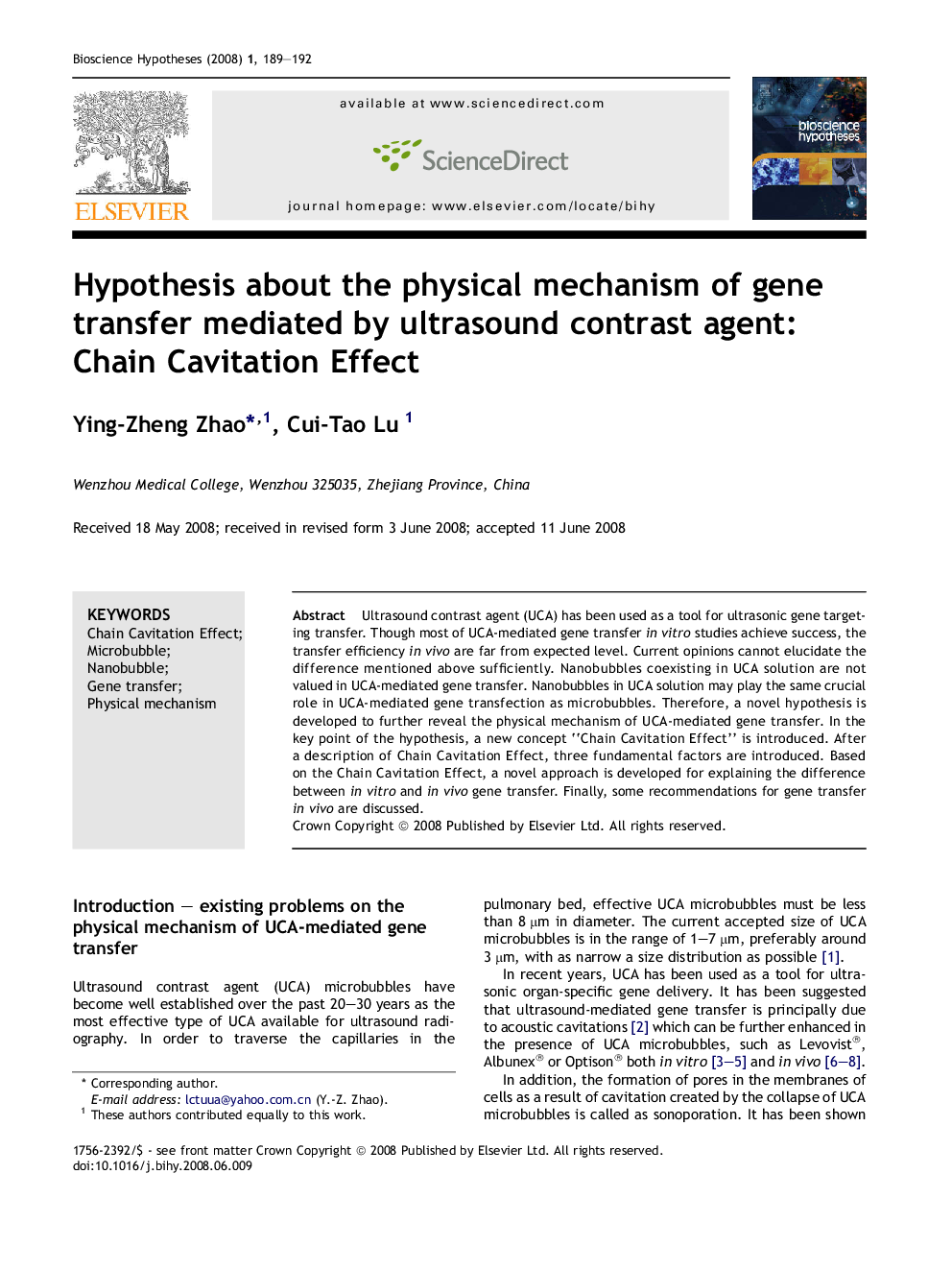| Article ID | Journal | Published Year | Pages | File Type |
|---|---|---|---|---|
| 2034943 | Bioscience Hypotheses | 2008 | 4 Pages |
Ultrasound contrast agent (UCA) has been used as a tool for ultrasonic gene targeting transfer. Though most of UCA-mediated gene transfer in vitro studies achieve success, the transfer efficiency in vivo are far from expected level. Current opinions cannot elucidate the difference mentioned above sufficiently. Nanobubbles coexisting in UCA solution are not valued in UCA-mediated gene transfer. Nanobubbles in UCA solution may play the same crucial role in UCA-mediated gene transfection as microbubbles. Therefore, a novel hypothesis is developed to further reveal the physical mechanism of UCA-mediated gene transfer. In the key point of the hypothesis, a new concept “Chain Cavitation Effect” is introduced. After a description of Chain Cavitation Effect, three fundamental factors are introduced. Based on the Chain Cavitation Effect, a novel approach is developed for explaining the difference between in vitro and in vivo gene transfer. Finally, some recommendations for gene transfer in vivo are discussed.
